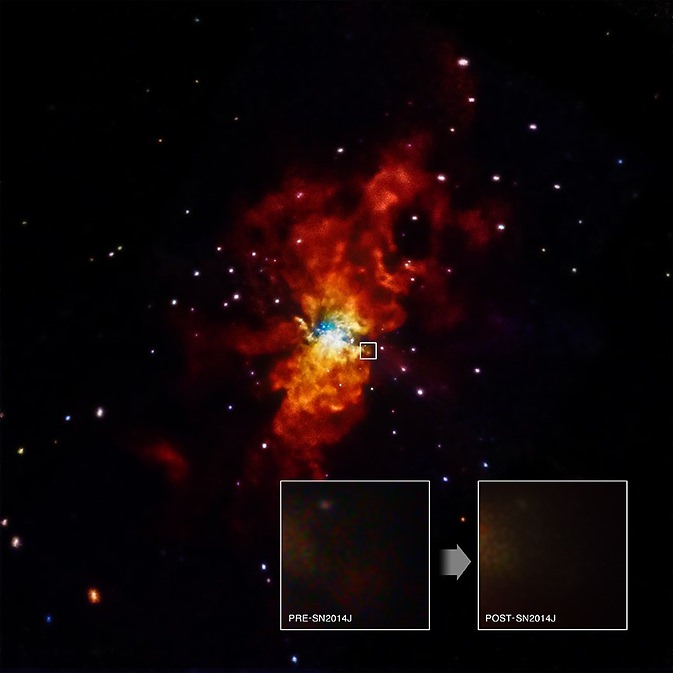X marks the spot: after probing the area where a star used to be, in X-rays, astronomers have been able to rule out one cause for the supernova explosion.
Because the Chandra X-Ray Observatory did not detect anything unusual in X-rays, astronomers say this means that a white dwarf was not responsible for pulling off material from a massive star that exploded (from Earth’s vantage point) on Jan. 21, 2014, triggering excitement from professional and amateur astronomers alike.
“While it may sound a bit odd, we actually learned a great deal about this supernova by detecting absolutely nothing,” stated study leader Raffaella Margutti of the Harvard-Smithsonian Center for Astrophysics (CfA) in Massachusetts. “Now we can essentially rule out that the explosion was caused by a white dwarf continuously pulling material from a companion star.”
So what caused it? Possibly two white dwarfs merged instead. Follow-up observations will take place in Messier 88 and the source of the explosion, which was about 12 million light-years from Earth. While that’s a long time by human standards, astronomers point out that is close on the cosmic distance scale.
A study on this work was recently published in The Astrophysical Journal. You can read a preprint version of the article here.
Source: NASA


“Follow-up observations will take place in Messier 88…”
I guess you mean Messier 82, right?
Interesting.. So if I understood correctly a Type IA supernova was ruled out (a white dwarf pulling material off a larger or equal sized companion until reaching a critical mass and detonating)…
After reading wikipedia I learned that type 1A supernovas are thought to have xray shells due to the progenitor star’s shell being blown outwards (a planetary nebula)… The wiki entry for Type 1A also mentions about white dwarf mergers (double degenerate progenitors):
Double degenerate scenarios raise questions about the applicability of Type Ia supernovae as standard candles, since total mass of the two merging white dwarfs varies significantly, meaning luminosity also varies.
Any further comments by scientists on this appreciated – I am very interested to learn more and look forward to results of future studies since standard candles are so important to modern cosmology…